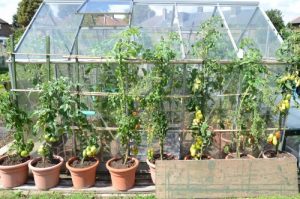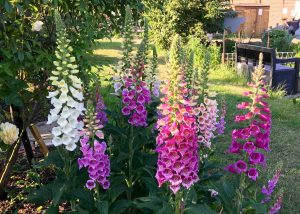
Maintaining soil structures and planning ahead
- Green manures such as Mustard and Phacelia and Grazing Rye can be sown now.
- Continue regular weeding to avoid build-up of work later.
Sowing and Growing
- Sow oriental vegetables such as mizuna, pak choi and mustard greens for salad leaves- they bolt less at this time of year.
- Sow parsley to last through till spring on a sunny windowsill.
- Sow Swiss chard and perpetual spinach at the beginning of the month.
- Make a last sowing of beetroot at the beginning of the month.
- Sow fast-growing ‘catch crops’ for autumn use, such as radish, lettuce, rocket and turnips.
- Plant out winter brassicas, broccoli, kale and cabbbages in soil which has been limed at least 6 weeks before, to reduce club root infestations.
- Plant new strawberries now, either as detached runners or new plants.
- In dry weather keep runner beans well-watered twice a week to aid setting.
- To reduce risk of tomato blight, water directly onto the roots not the leaves.
- Feed courgette plants weekly with a high potash liquid feed to continue fruiting.
- Summer prune trained fruit trees such as fans, espaliers and cordons.
- Prune plum and damson trees after fruiting. On grape vines shorten fruit bearing branches to two leaves beyond the fruit bunch.
- Prune out fruited canes of summer raspberries.
- Tie in new canes on raspberries and blackberries.
- On grape vines shorten fruit bearing branches to two leaves beyond the fruit bunch.
- Cut back chives if showing signs of rust and new shoots will quickly appear. Remove mint plants showing signs of rust. The disease will persist over winter and re-infect new plants next year.
- Pick off and destroy rosemary leaf beetle which are active at this time of year.
- In the greenhouse avoid splashing water onto leaves. Moisture triggers spore germination of fungal diseases.
Harvesting
- Harvest sweet corn when a grain exudes milky juice when tested with a fingernail and the whiskers are brown.
- Harvest onions and shallots when the stems are dry and papery.
- Start harvesting runner beans, parsnips and cucumbers when ready.
- Complete harvesting of second early potatoes and begin to harvest main crop potatoes as they begin to flower.
- Harvest early ripening apples and pears.
- Harvest carrots, but leave protective insect mesh on carrots until autumn.
Gardening for wildlife
- Leave some flower seed heads on plants as source of food for wildlife.
- Cut and shake ripe seed heads of annuals over suitable patches of bare soil for flowers next year.

